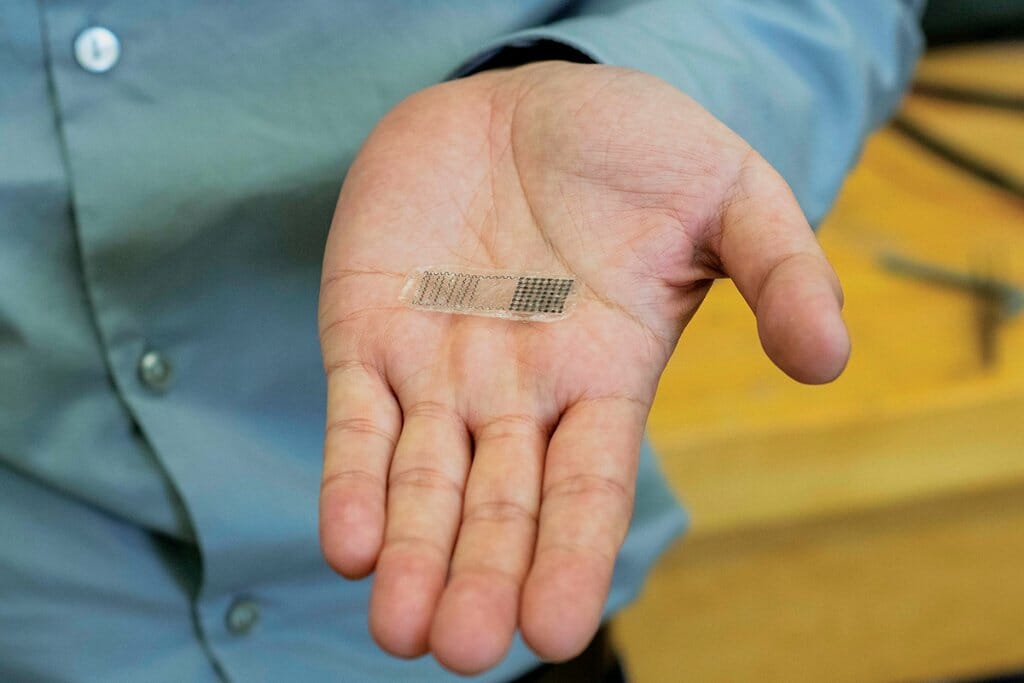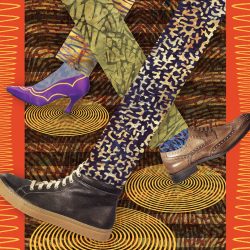Healing Bones, Then Dissolving
A new medical device could have us up and around in no time.

The thin, flexible device is self-powered, implantable, and bioresorbable, so once the bone is knitted back together, the components dissolve within the body. Jason Daley
In 2017, Green Bay Packers quarterback Aaron Rodgers broke his collarbone. Typically, it takes about 12 weeks for a collarbone to fully heal, but fans hoped Rodgers might recover early and save a losing season.
So did Xudong Wang, a UW professor of materials science and engineering and an expert in creating thin, movement-powered medical devices. “I started wondering if we could provide a new solution to bring athletes back to the field quicker than ever,” Wang says.
Researchers know that electricity can help speed up bone healing, but “zapping” fractures has never really caught on, since it requires surgically implanting and removing electrodes powered by an external source.
Wang’s latest invention is a major update of that same electrostimulation concept. It didn’t come in time to help the 2017 Packers, but it may help many others by making electrostimulation a much more convenient option to speed up bone healing.
His thin, flexible device is self-powered, implantable, and bioresorbable, so once the bone is knitted back together, the components dissolve within the body.
Initial tests have been successful in animals, and Wang and his collaborators hope to scale up the device so it will work in humans.
Published in the Winter 2021 issue



Comments
No comments posted yet.